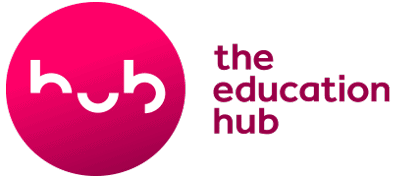Notice: Trying to get property 'ID' of non-object in /var/www/theeducationhub.org.nz/wp-content/plugins/sfwd-lms/themes/ld30/templates/topic.php on line 80
Let’s look at gaining multiple perspectives on children’s learning to complement the analysis you have developed so far for your observed event. When writing a learning story, it is important to gain the perspectives of other teachers in your teaching team, as well as those of the family and the child themselves, as this enables us to develop more secure judgments (validity) or simply open up a space for alternative interpretations (uncertainty). We are now going to focus on getting feedback on your story from each of these groups.
Our aims are to:
This will involve:
There is also an opportunity to develop your understandings around working in partnership with others in our further reading section.
Revisit your learning so far
Why is it important to generate some hypotheses about what children are interested in and thinking about as part of your assessment practice?
Watch a video
Involving others in assessment: Who to involve and why?
The best way to get feedback and additional perspectives on the learning you have observed is to share your initial observation notes, photos, or perhaps just the description part of your story with a range of people who know the child well – including other teachers, family members – as well as the child, and find out how they interpret these events. Below we look a bit more closely at why and how we should gain the perspectives of children and families in particular.
Read
Involving children in the assessment process
Learning stories offer children an opportunity for reflection and self-assessment, which is really important for developing children’s metacognition (an ability to reflect on their thinking and learning, in terms of how they learn and what they know). Revisiting previous experiences and recalling their ideas and theories can help children to remember the thread running through their learning, and can motivate continued exploration. This can help children to dig deeper into a concept, or develop deeper investigations. Learning stories might be specifically written to help children to examine their own thinking and the thinking of others related to a topic or activity. They can also stimulate children’s interest and curiosity about each others’ learning, interests, problems and strategies.
When learning stories are shared with children, teachers can invite children to comment on their own learning. As well as supporting metacognition, gaining the child’s perspective on their learning enables teachers to recognise children’s intentions and interests in order to co-construct curriculum with children. This means that curriculum will reflect children’s interests. The concept of co-construction requires that teachers support children to develop the skills they need for planning and executing their own learning trajectories. These are skills such as reflecting on their current thinking and understanding (metacognition), and different skills for inquiry and creative work such as testing ideas, and revising products.
Involving parents and whānau in the assessment process
Active parent and whānau engagement in assessment practice is very powerful in terms of helping you to understand children more deeply and better support their learning. Learning with and from families to gain a deep knowledge of children’s strengths, interests, family and community activities enables you to create links to these within the programme and to provide children with continuity in their learning and expectations. Working in partnership with parents enables you to support children in connecting their home and school experiences, which enables deep learning. There are many ways to support parent and whānau involvement in assessment practice, including:
- Using email, diaries, displays, information evenings, photos on slideshow, and parent interviews, as well as daily conversations, to share information about children’s activities and what they are learning at the centre.
- Ensuring that assessment documentation is easily accessible. This means ensuring documentation is easy to find and use but also that it is relevant, meaningful and easy to comprehend.
- Using children’s and families first languages when possible.
- Regularly inquiring into family aspirations for children’s learning, and allowing this understanding to influence what you notice and focus on as learning. Families and whānau will then be more likely able and willing to participate in assessments and make links to children’s home experiences and cultural contexts.
Let’s now get some additional perspectives for the analysis of your observed learning event. Your first task is to engage a colleague in a reflective conversation about your observed learning event, to gain some additional perspectives for your analysis. Then you can choose the most appropriate way to engage children and families in co-analysing the learning that is happening in activities you have documented.
Reflect
Use a reflective conversation with a colleague to generate more ideas for the analysis of the learning in your learning story. Share either the observation data (video, photos and notes) or the content section of the learning story with a colleague (without your analysis) and ask them for their thoughts about analysing the learning. You might like to print the questions from the previous “Reflect” task to share with your colleague, available here.
Then ask yourself:
- How different is their analysis from yours?
- What other knowledge or understanding about this child and family, or about the context of learning, does their interpretation add to your growing understanding of this learning event?
Relate your learning to practice
- Incorporate your colleague’s analysis into your learning story. For example, you might just add extra analysis to your analysis, simply listing your colleague’s hypotheses in addition to your own, using a tentative tone (“Or maybe you’re interested in understanding how water can carve out its own path?”). Multiple hypotheses add to the strength of your learning story by helping you to be open to many potential ways of taking the learning further. You might also add connections that your colleague may have made to other learning events “Raewyn told me you shared this book with Raoul last week too”.
- Incorporate the child’s perspective on their learning activity. Choose one of the ideas below to engage the child in reviewing this learning event (if appropriate) and obtain their comments and ideas. Record children’s words somewhere on the story, either weaving them into the narrative or adding a separate section. With infants and toddlers, you might choose to try to represent their perspective by writing from the child’s perspective, or taking on a child’s voice somewhere in your narrative. For example, you might caption a photograph with “If only I could reach it…” or similar.
- Provoke children’s narratives, conversations and explanations about their learning experiences by looking at photographs or art work. Use PowerPoint slides or photo presentations to construct an open-ended story, then ask children for their comments about what might happen next.
- Invite children to create their own learning stories by choosing photographs and dictating words.
- Ask questions that encourage children to discuss and think further, for example, such as asking them to think about how they might develop an idea or skills. For example, would they like to keep their insects a little longer next time to study them? What would they need to be able to do so?
- Include older children in setting goals and in planning next steps for their learning journey. Acknowledge the goals children set for themselves, use them as a basis for spontaneous and formal planning, and indicate through your feedback how children are doing.
- Make opportunities for children to make judgements about their achievements. Use materials and resources to provide points of reference with which children can assess their achievements. Consider referring to earlier assessments in their portfolios to help children compare their current ability or performance with that of a previous time.
- Incorporate a family member’s analysis on the child’s learning activity. Have a conversation, compose an email or create an online communication to the parent and whānau of the child your learning story is about, sharing the content section of the learning story and inviting their thoughts on the learning that is happening or next steps. Use the following pointers:
- Share the raw observation data (a video, set of photos, or observation notes) or a partly written learning story (before analysis and planning) with families to find out their interpretation of the learning. Sometimes families can be discouraged from adding their own interpretation after reading a more polished analysis from the teacher.
- Find the most appropriate way (specific to that family) to share this information. This might be through sending home a paper copy of the documentation with some written questions, emailing the description of the story and asking questions, using an online portfolio communication system, or chatting face-to-face.
- Invite a general comment with questions such as “what do you think of this story about your child?” as well as specific questions that invite parents and whānau to analyse and plan for learning. The latter might include “Do you see your child’s abilities advancing in this story? (In what way?)”, “Why do you think your child is so interested in dinosaurs?”, “How would you like us to follow this up with your child?”. (Don’t overload parents with questions though, one or two carefully designed questions is enough!)
- Make time for a follow-up conversation or dialogue with families in which you respond to their comments and ideas (this might be face to face or via electronic messaging).
Reflect
What are the different ways that you invite parents and whānau to contribute to assessment practice and planning for children’s learning? What works well in your setting?
Further reading
Learn more about validity and reliability in assessment here.
Access our guides to parent partnership here and here.
Explore different cultural persectives on assessment by reading our guide on Kaupapa Māori assessment.
Summary
Here are the important points to take away from this module about analysing children’s learning:
Involving children in assessment practice can also support the co-construction of curriculum with children.


